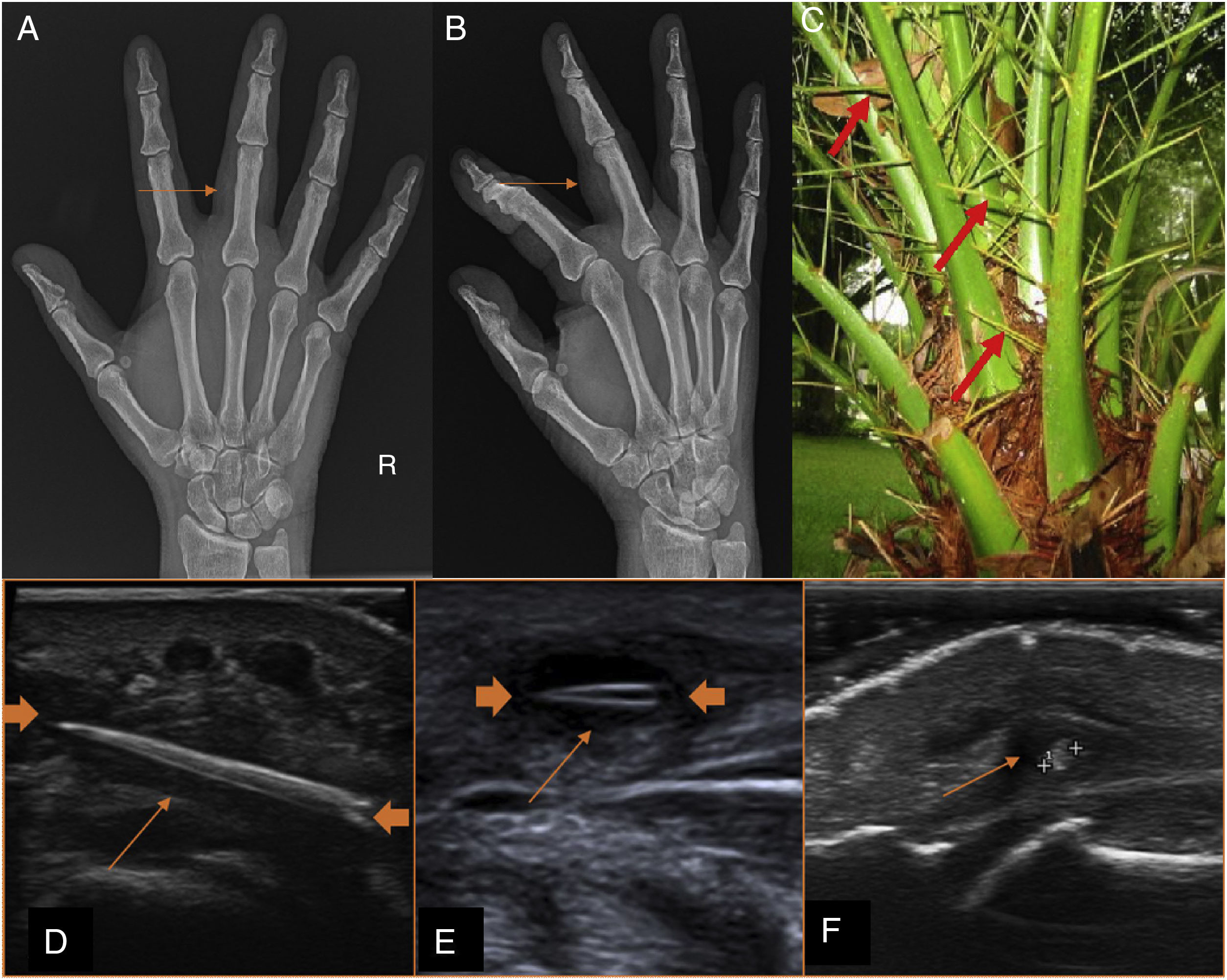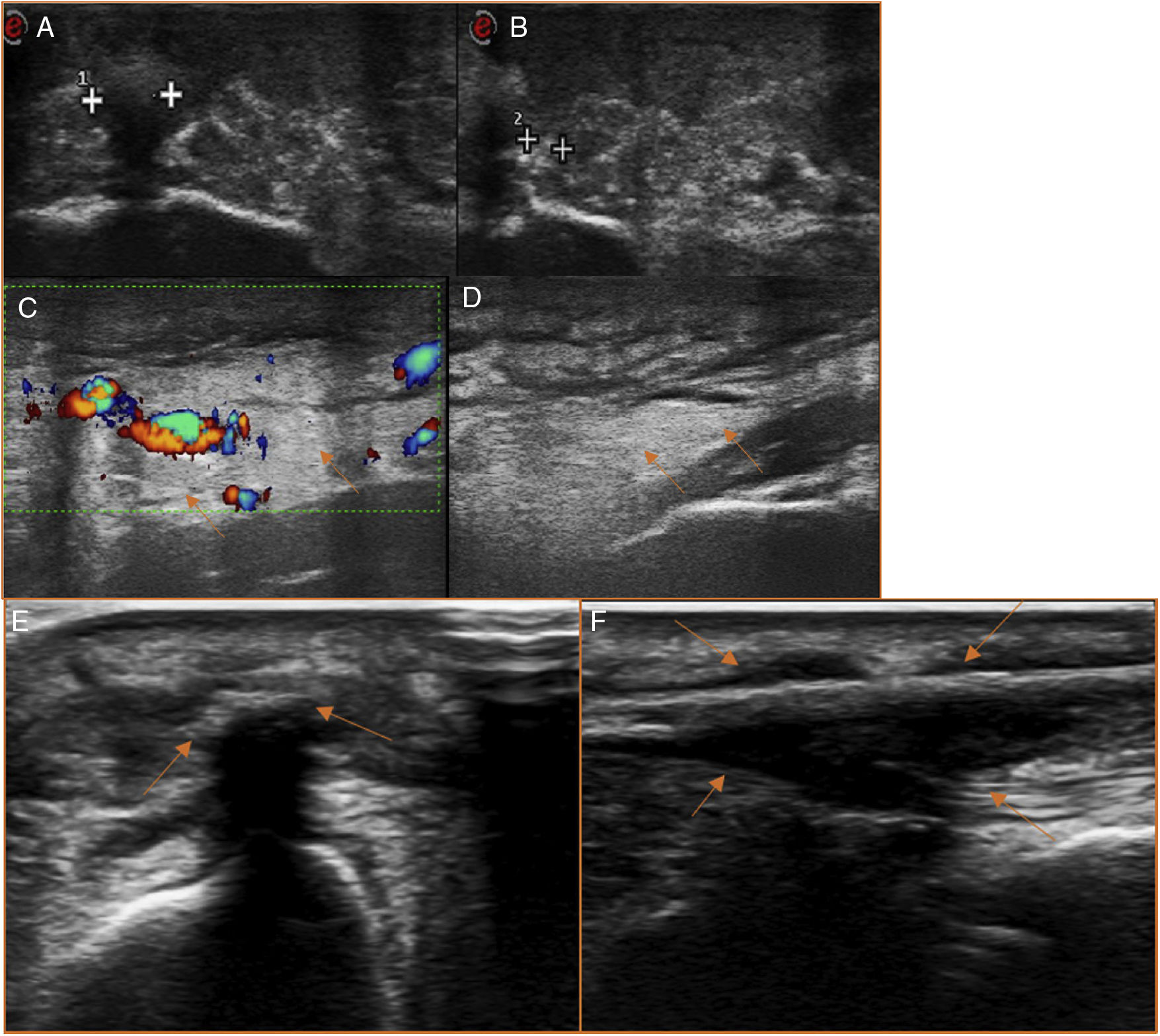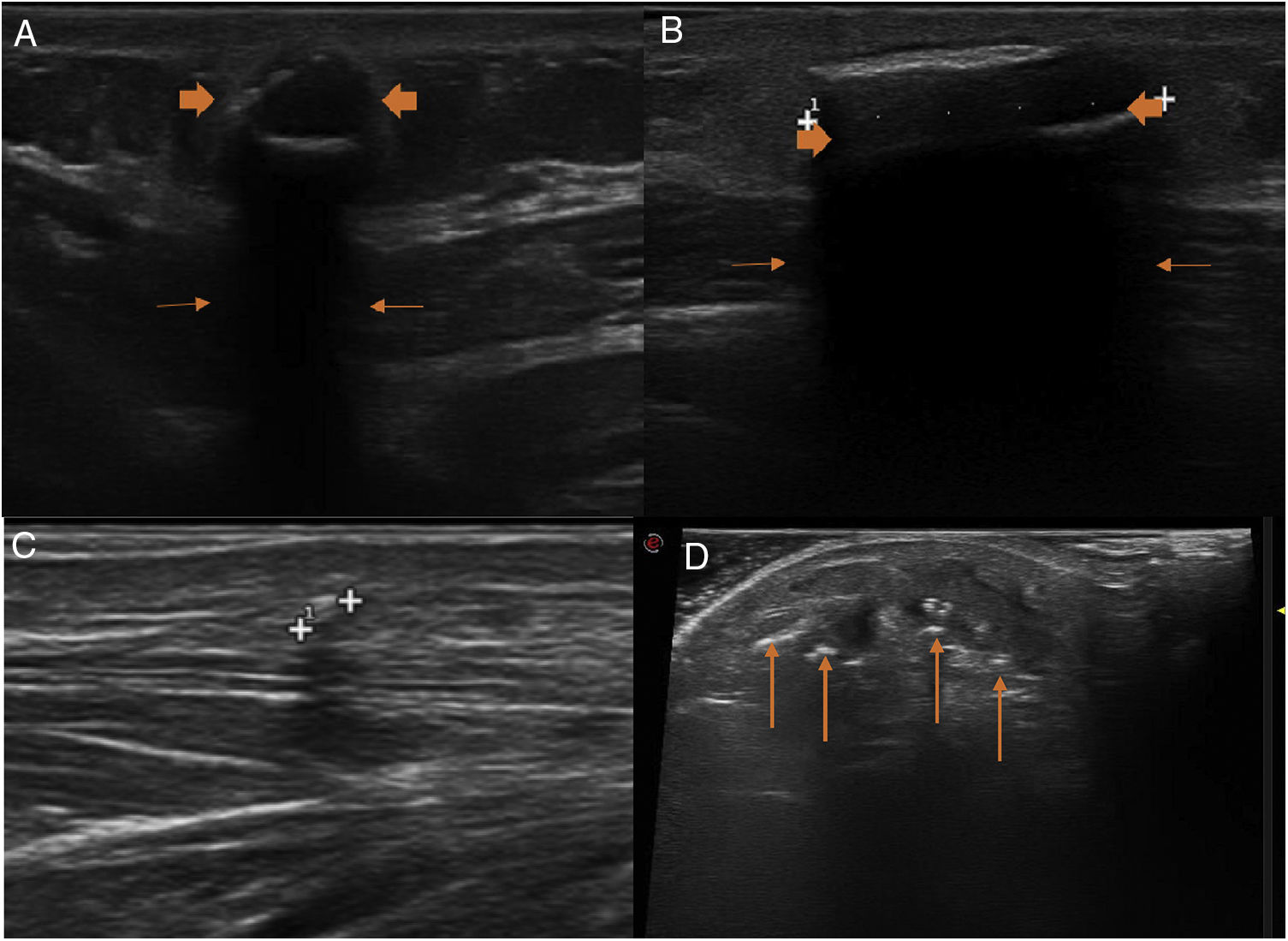Los pacientes con heridas penetrantes y sospecha de cuerpos extraños retenidos representan un motivo frecuente de consulta en los servicios de urgencias. Es necesario un estudio radiográfico para descartar la presencia de cuerpos extraños. Sin embargo, las radiografías solo resultan de utilidad en los objetos radiopacos (metal, vidrio, piedra y algunos plásticos). Cuando la sospecha diagnóstica es alta y el estudio radiográfico es negativo, es necesario realizar otras pruebas de imagen. La ecografía ha demostrado su utilidad en la identificación y localización de cuerpos extraños tanto radiopacos como radiotransparentes. La ecografía permite una excelente evaluación de las estructuras adyacentes (músculos, tendones, ligamentos y estructuras neurovasculares) y ha demostrado ser de utilidad en la valoración de sus lesiones asociadas. Los diferentes materiales de los cuerpos extraños presentan patrones ecográficos característicos que resultan de utilidad para su aproximación diagnóstica. Por último, es importante estar familiarizado con los potenciales errores diagnósticos para evitar falsos positivos.
Patients with penetrating wounds with suspected foreign bodies retained in the wound are often seen in emergency departments. Imaging studies are necessary to rule out the presence of retained foreign bodies. Plain-film X-rays, however, are only useful when the foreign bodies contain radiopaque material (metal, glass, stone, and some plastics). In cases with strong diagnostic suspicion and negative plain films, other imaging tests are necessary. Ultrasonography has proven useful in the identification and location of both radiopaque and radiotransparent foreign bodies. Ultrasonography enables excellent assessment of adjacent anatomical structures (muscles, tendons, ligaments, and neurovascular structures) and of associated lesions. The different materials found in foreign bodies have characteristic ultrasonographic patterns that are useful for diagnosis. Finally, it is important to be familiar with the diagnostic pitfalls to avoid false positives.



















